Yesterday, I overheard a debate between two friends.
“It was a good name.” Said by one about the name of the startup they were founding.
“It is a good name, but not the best name.” Said the other.
You could say the same thing about the marketing strategies we use.
There are many good marketing techniques. Both offline and online.
Is the one you chose the best for your startup?
This is a million-dollar question.
Numerous studies have shown the best marketing channels.
They can work for any kind of startup.
You can use them to increase traffic and drive sales.
Some marketing channels have been proven to be very effective over the years.
If you care about better, more traffic and leads that produce sales, then this article is for you.
So what are the marketing channels that will always produce results no matter what stage your startup is in?
Content Marketing
Content marketing is the process of creating, publishing and distributing content for your target audience.
The goal of content marketing is to attract a highly-targeted audience that produces sales.
Content Marketing Institute ran a survey where they asked B2B companies if they use content marketing.
According to the report of the survey, 88% of respondents said they use content marketing.
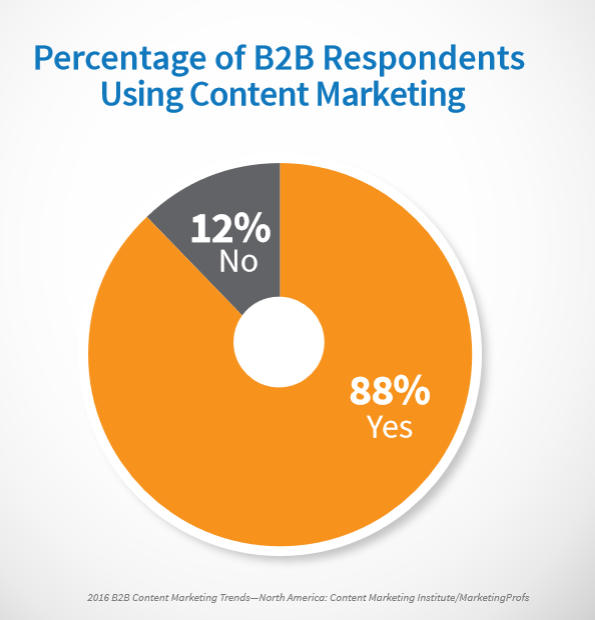
Eloqua, a leader in the marketing automation space, used content marketing to achieve amazing results within a very short time.
Here’s what they quickly achieve in terms of traffic:
- 12,000 new visitors to the blog
- 43% increase in traffic referred to Eloqua.com from blog
And here’s how customer engagement increased too:
- 21% increase in views of the demo (which is their primary indicator for purchase)
- 12% increase in pageviews on Eloqua.com
- 14% decreased bounce rate
- More than 2,000 registrations
- More than 500 qualified lead (the best campaign in that quarter)
- And more than 25 people in active buying stage
These meant a lot to the company whose products are worth thousands of dollars.
Dave Nevogt turned Hubstaff into a business that makes $108K monthly recurring revenue (MRR) with content marketing.
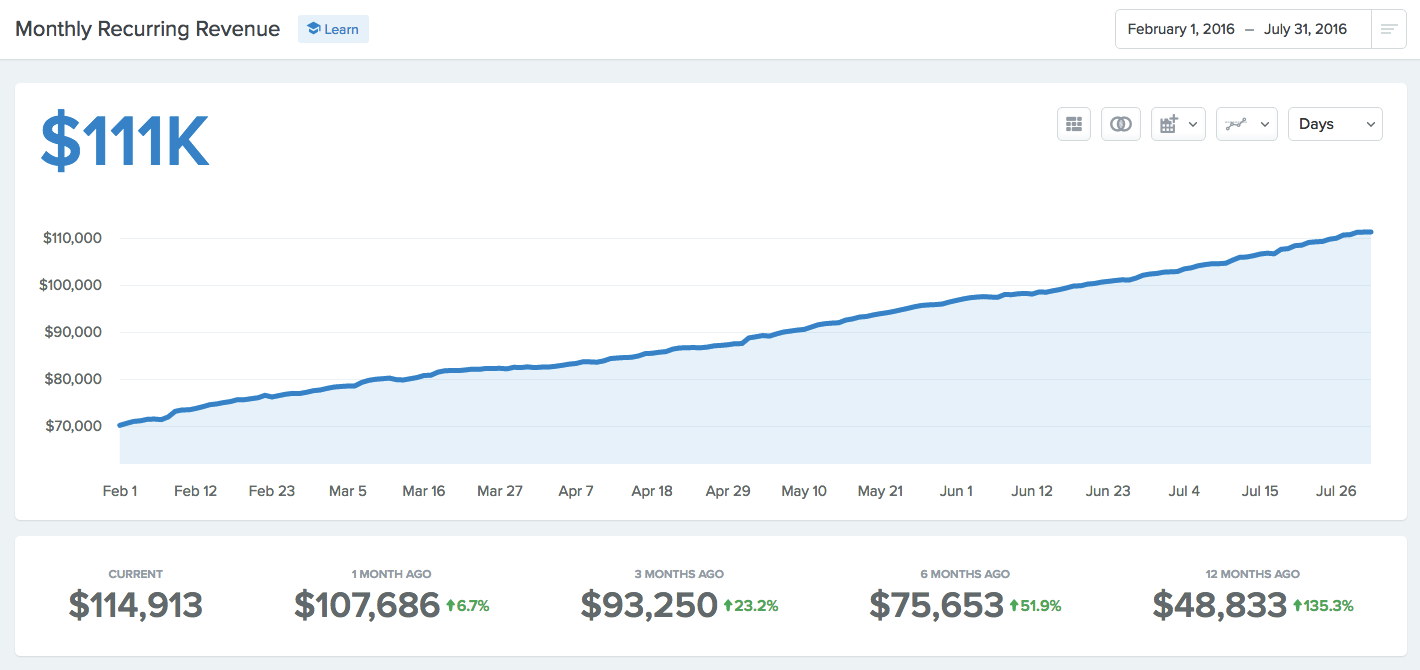
Content marketing is very easy to apply.
Let’s say you run an accounting firm that specializes in tax preparations.
So you want more customers.
How can you use content marketing?
You can start a blog on your website and publish articles about some common tax-related issues your target customers have.
Let’s assume you publish 3 articles per week.
Before you know it, those blog posts will start to rank on Google and other search engines.
Your target customers will begin to find your articles on Google and visit your website.
They will realize that you offer tax preparation services.
And because it’s just what they need, they’ll contact you.
That means more qualified leads. That means more clients.
That’s what content marketing can do for your business.
Content marketing is more effective and cheaper than PPC.
For example, a keyword like “tax preparation service” is worth $5.73 per click on Google.
If you receive 1,000 visits from this keyword within a month, that would be $5,730 spent.
You’ll have to spend that amount every month if you want new visits. Spending $5,730 per month to get 1,000 visits is not cheap.
But if you write a blog post and 100 people read it in the first month, it won’t stop there.
That blog post will continue to receive more and more visitors in the following months.
The blog post could have received a total of 1,000 visitors by the end of the year. (It could be more).
If you continue to write more blog posts like that, they will continue to produce more leads as time goes on.
This is how it will look like by 12 months:

Content marketing only needs your time. You need dedication to make it work.
If you’re a good writer and depending on the time you have, content marketing can be very effective for you.
Content marketing can help you attract a lot of potential clients to the top of your marketing funnel.
It helps you build awareness that generate a lot of leads over time.
I consider it the simplest marketing strategy of all time. I assume that’s why many people tend to ignore it.
You can start content marketing today, right now, without a penny and start getting results.
All you need is a content management system (CMS).
I use WordPress.
There are many others.
You can host your blog on your current web hosting service if your company website is already set up and running.
You can register a domain name, buy a web hosting and start blogging today if you don’t have a company site yet.
You’ll need a website analytics service like Google Analytics.
Google Analytics is free.
And start pumping out high-quality contents your target customers want to read.
In June 2015, Bloomberg published an article titled What Is Code?
In fact, it’s proper to call it a book. Or, a magazine. Or, as in newspaper.
It contained about 38,000 words.
Bloomberg released it for free.
It has animated graphics, chapters, sections, examples, notes, statistics, and so on and so forth.

The result?
128,900 social shares.
That’s 128,000 people who know about Bloomberg.

It won’t hurt Bloomberg that they published this high-quality content for free.
Now, you don’t need to write a high-quality content as long and expensive as that.
Yours could be between 4,000 – 7,000 words.
Your competitors are probably doing content marketing too.
Creating better high-quality contents is the way to stand out and remain successful. Make sure you focus on that. It’s very important that you do.
Creating trashy 500 – 1,000-word article won’t help your startup at all. That will only work when most of the competition is not investing in content marketing.
But if the competition is doing content marketing, you’ll have to do it better.
White Hat SEO
With the knowledge of SEO alone, some people are creating small internet businesses that make thousands of dollars per month.
For example, Spencer Haws created an affiliate website that generates $3,000 per month only because he knows how to do SEO right.
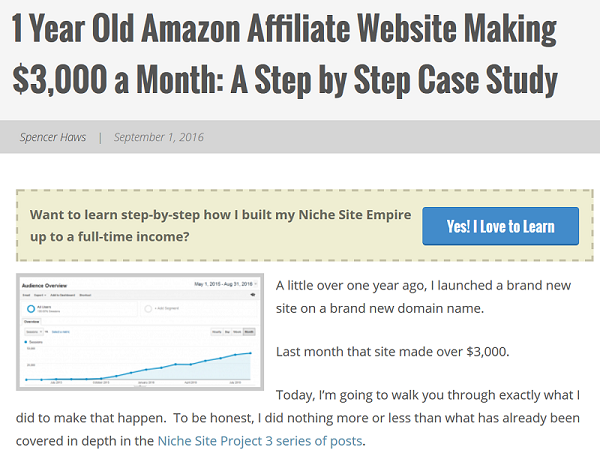
Building niche sites from the ground up and making them successful can be very easy when you’ve learned everything about SEO.
The knowledge of SEO becomes essential when you’re building a startup.
For years, many people have heavily profited from SEO.
Successful brands like HubSpot and Groupon heavily rely on SEO.
It has the power to drive a lot of brand awareness.
Its ROI is also attractive.
SEO can have a great impact on the research/buying cycle.
I recommend SEO to startups who are willing to wait for, at least, six months to a year before they start seeing big positive results.
You’ll often hear SEOs talk about “White hat” and “Black hat.”
What are the differences?
White hat is SEO strategies that are low-risk and fall within the webmaster guidelines laid out by Google and Bing.
Black hat is SEO techniques that seek to exploit loopholes in search engine algorithms and rank higher within a very short time.
Often, these loopholes are discovered by search engines and closed.
They are short cuts.
They work until they no longer work.
It’s difficult for the search algorithms to detect if a site owner is using black hat. So, search engines employ manual reviewers to find cheaters and penalize them.
Examples of black hat SEO techniques are:
- Keyword stuffing
- Hidden text and links
- Cloaking
- Duplicate content
- Link farms (PBN)
- Paid links
J.C. Penney, US retailer was penalized by Google for buying links back in February 2011.
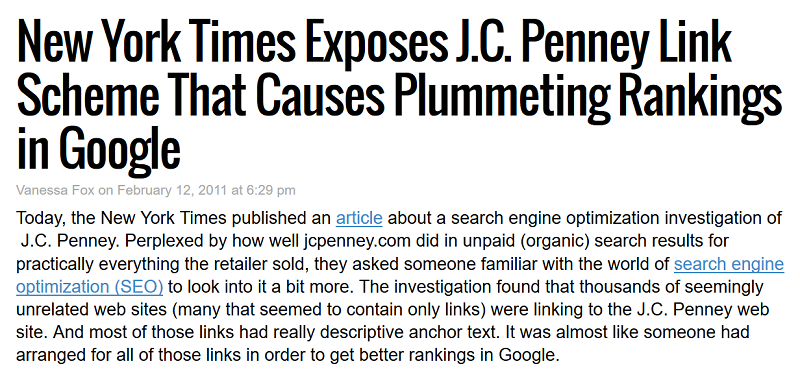
Overstock was penalized for the same offense a few weeks later.
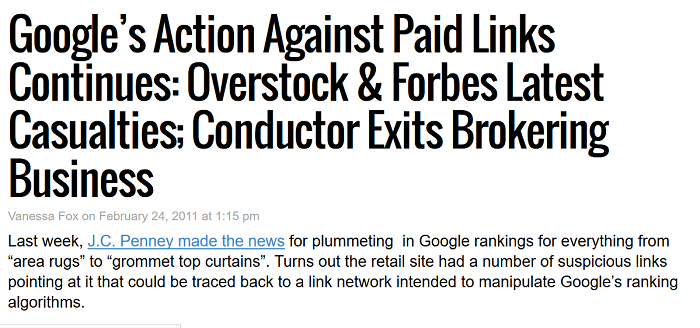
These companies are now back and ranking on Google once again.
But as I’ve seen many times over the years, this can be very unforgivable for small brands with not so much connection with Google employees.
As a startup, I highly recommend that you stay away from black hat SEO techniques as the business may never recover from the penalty.
I’ll like to talk about white hat in this article because they are low risk.
A few examples of white hat SEO are:
- Creating your own unique, insightful and quality content
- Ethical guest blogging
- Blog commenting for building relationships that lead to links
For example, I have an SEO strategy that I very much admire.
Here’s how it works:
Update. Upgrade. Republish.
You don’t always have to create a new blog post.
If there’s a blog post you’ve published, which is getting some traffic and ranking on search engines, why not update, upgrade and republish that blog post?
Sound like a good idea?
HubSpot used this exact same strategy.
The result?
Organic traffic and rankings improved for every blog post they updated.
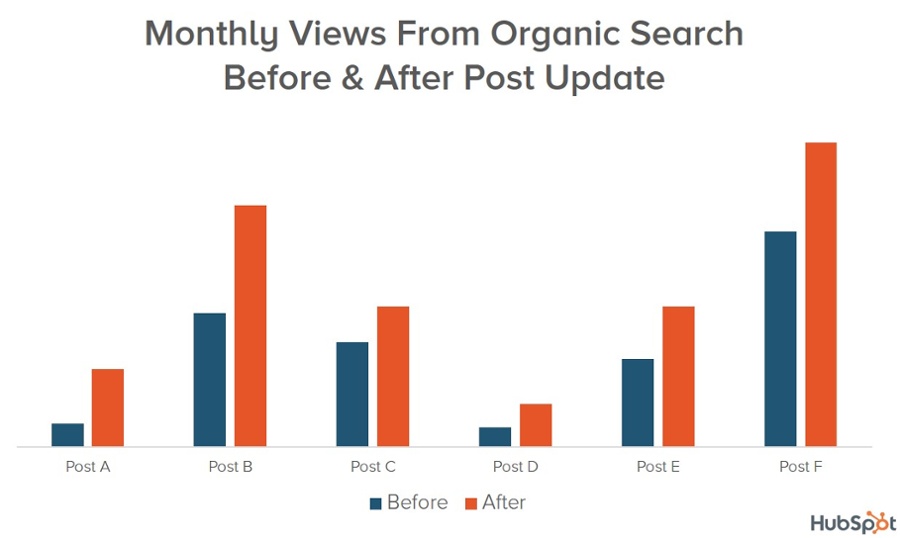
The conversion rates of those updated posts improved as well.
Here’s a very big increase for one of their updated blog posts:
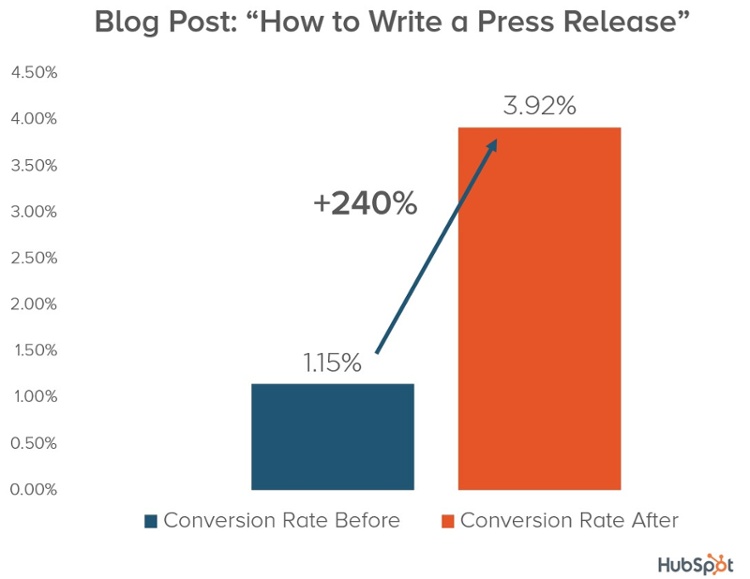
You don’t have to change the URL when updating a post.
If you have to change the title of the post, make sure you’re keeping the keywords.
Replacing the keyword may lead to a big ranking loss because the post will no longer be targeting that keyword.
It’s also cool to add some editor note that tells visitors the post was updated.
When updating a blog post, you should replace any inaccurate or outdated information that may still be on the page.
Replace old stats, studies with new ones.
Check and replace internal links or outbound links if necessary.
If they are better contents on the web, you can replace the old links whose contents are now outdated.
You can also a/b test the CTA of the page.
The meta description should also appear more compelling to search users.
By doing all these, it keeps your content fresh in the eyes of search engines. And they will reward you with better rankings on search results.
Brian Dean of Backlinko used this strategy to increase the organic traffic a page by 292.54%.
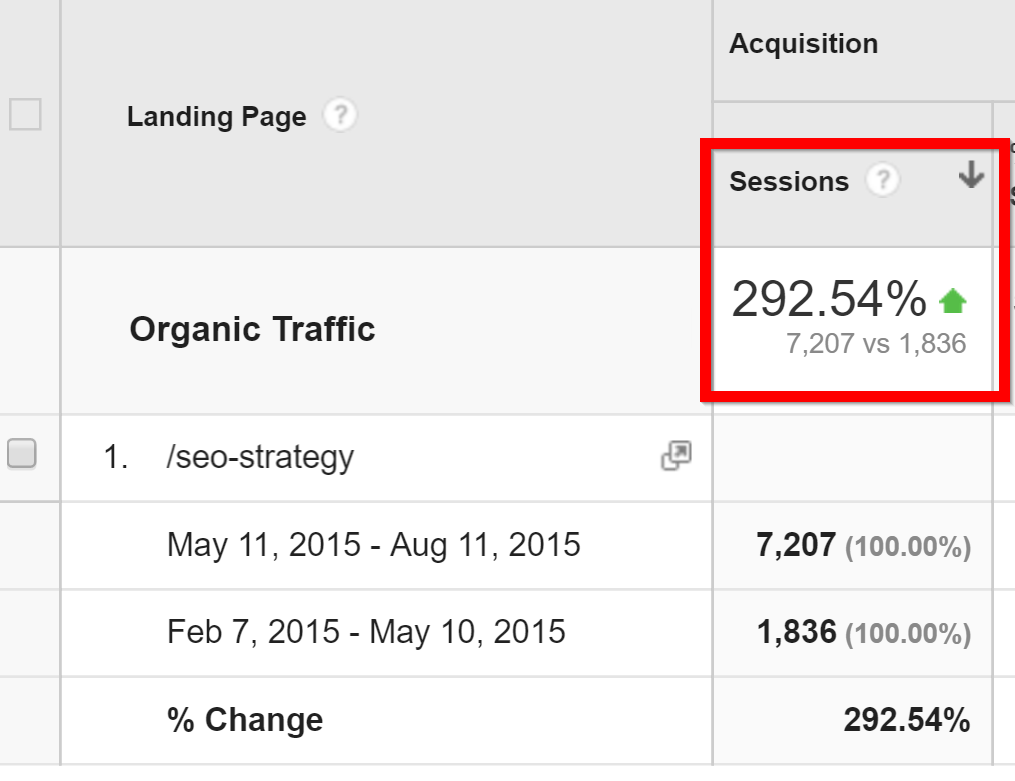
Social Media
Social media have been existing in one form or another since the early days of the web.
Today, 70% of the U.S. population is on social media.
And more than half use two or more social networks.
The number of worldwide social media users is projected to hit 2.5 billion by 2018.
Social content influences both B2B and B2C purchases.
If your startup is not yet on social media, you’re missing out big time.
A B2B company like HubSpot is heavily investing on social media.
They maintain an active Facebook page that promotes their business.
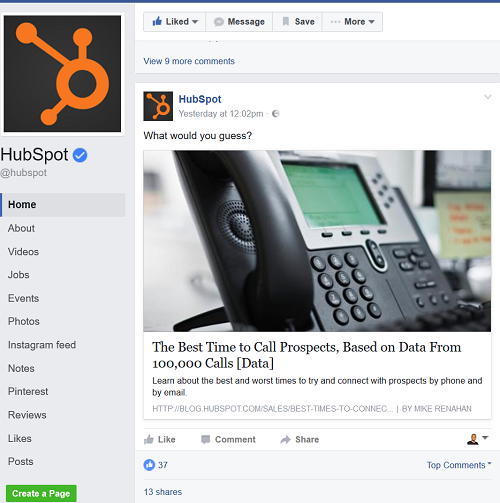
They are even on Pinterest.
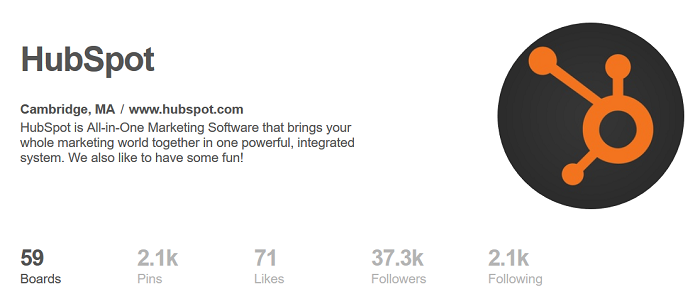
When a B2B company like this is on Pinterest, it shows they are willing to connect with their target customers no matter where they are.
Online adults aged 18-34 are most likely follow a brand via social networking (95%).
Now if your customers are within this age group, it shows you really need social media.
Social media is important today. And it is even more important tomorrow as we continue to see user growth in mobile devices.
You also need social media if your product targets top executives. Don’t say these people are not on social networks.
84% of CEOs and VPs say they use social media to help make purchasing decisions.
Social helps you retain customers.
According to Business2Community:
“Social is viewed as the second-most effective digital tactic for customer retention, behind only email. 64% of sales reps say they closed at least one deal in 2014 directly from social media use. And of small business owners who use social media, 92% agree that “social media marketing is important for my business.”
To make social media work, you shouldn’t just jump on any social platform and start marketing your startup. You need a plan.
You should develop a plan for each social channel.
Let’s take Facebook for example.
At the time of writing, Facebook has 1.71 billion monthly active users.

Facebook is the biggest social site in the world. Surely, your target customers are on Facebook.
You need to develop a plan to reach and engage them on the platform.
You should develop a buyer persona of your target audience.
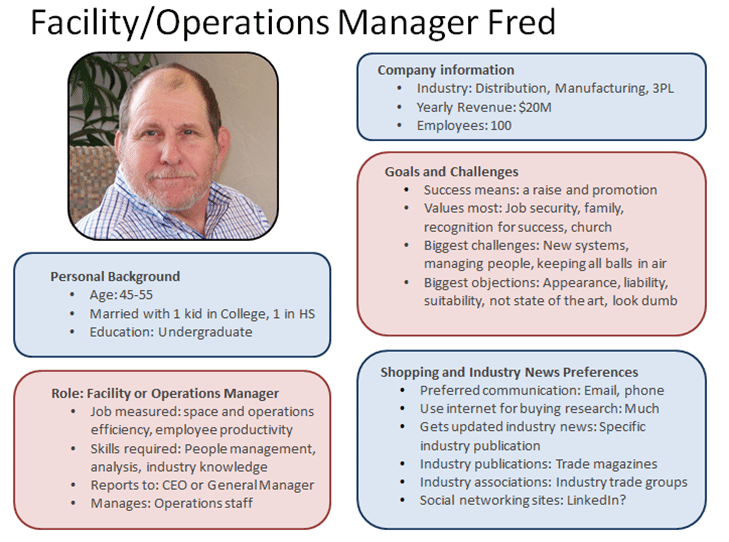
The persona will help you know your target customers better. What they like to do and who they really are.
That helps you develop the tone you’ll use to communicate with them on social media.
Your plan should also include your primary goal for each social channel.
Is it to convert prospects into customers?
Or, deepen the relationship with your current customers?
Conclusion
There are many marketing channels available at our disposal today.
But these top 3 have been proven over and over again to be highly effective in getting those quality customers.
Remember, the channels are:
- Content marketing
- SEO (With White hat strategies only)
- Social media
Thanks for reading and please share this article with your friends on social media.
Related articles: customer acquisition funnel, customer behavior analysis, A/B testing, marketing channels, why every startup needs a growth hacker
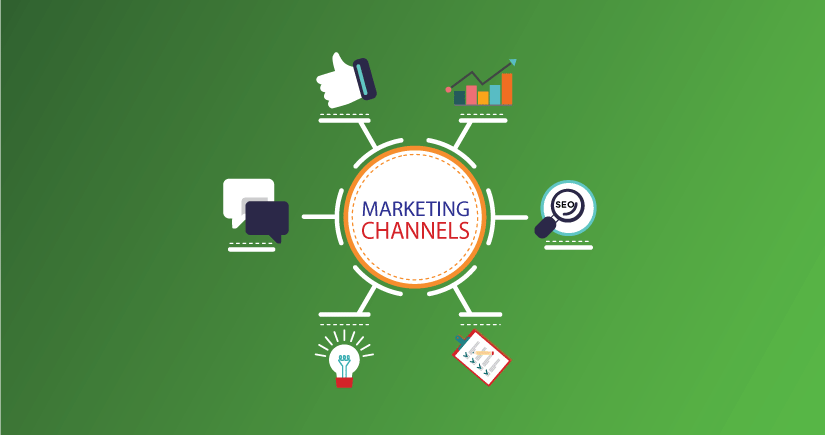
You’ve provide some irrefutable proof to belief, that u overlay throughout the content.
The point is that, disdaining those channels (SEO, Content Marketing, Social Media) could severely harm companies growth. No offense, Could mastering one channels is a profitable idea?
Hi Jabed!
Appreciate your post! What type of businesses should use this idea? (except: SEO, Content marketing, Social media business)? Mainstay should not be one , but many that is the key to overcome the subversive challenges in this marketing field.